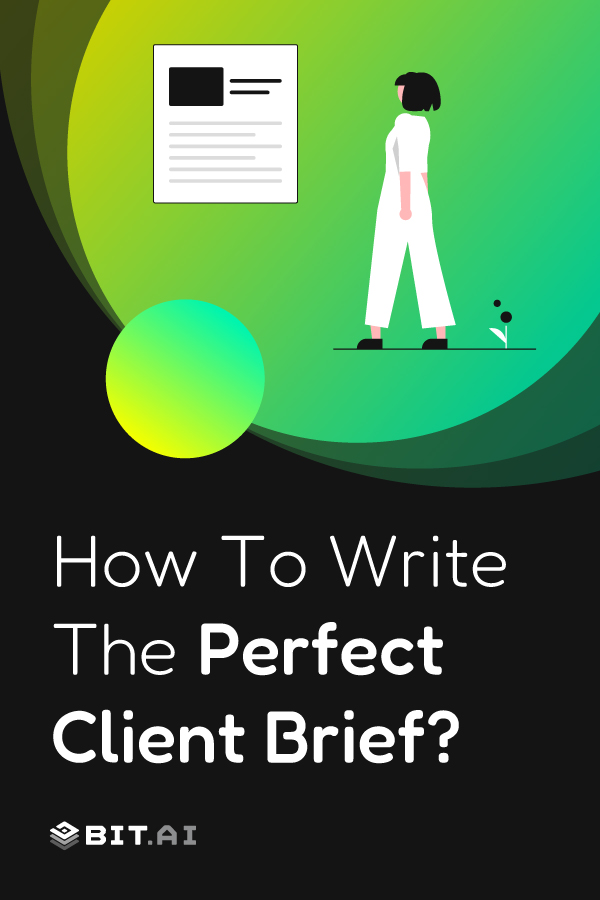Good communication is just as stimulating as black coffee, and just as hard to sleep after. – Anne Morrow Lindbergh
Communication is key to a stable, ongoing, and healthy relationship. This is even more important in the context of a business where poor communication can lead to disastrous results and can cost a ton of money. If goals, a roadmap, or strategy is not effectively communicated within the organization, it could lead to chaos and confusion. Take a look at these stats:
- 56% of the budgets allocated to projects are at risk due to poor communication.
- Ineffective communications are the primary contributor to project failure one-third of the time and have a negative impact on project success more than half the time.
- High-performing organizations (those completing an average of 80% or more of projects on time, on budget, and within goals) create formal communications plans for nearly twice as many projects as their lower-performing counterparts (which complete fewer than 60% of projects on time, on budget, and within goals).
- 28 percent of employees said poor communication was the primary cause of failure to deliver a project on time.
- Companies risk $135 million for every $1 billion spent on a project and new research indicates that $75 million of that $135 million (56 percent) is put at risk by ineffective communications.
As you can see, whether you are communicating internally with your team or working with an external agency or client, clear communication is key to project success.
It’s one thing to communicate with agencies and external partners and set up a face-to-face meeting to discuss project goals. However, getting everything in written form solidifies whatever is being discussed and makes sure everyone is on the same page.
This is where a client brief comes in.
Writing a client brief helps you create an outline of your needs and goals when planning your tasks around a project. It is a crucial document that is written prior to the commencement of a project to convey project goals to an agency or organization you have decided to work with. Let us explore client briefs in detail…
What Exactly is a Client Brief? (Definition and Meaning)
A client brief is essentially a recorded document that helps in guiding and animating any project. The client brief, written by a client, explains the ins and outs of a project to the agency who’ll be working on it. It acts as a blueprint for your project that helps synchronize all stakeholders involved in the project and bring cohesiveness to the group.
The aim of a client brief is to convey what business problem they need help with, describe their overall brand persona, and define the end result they expect. This document thus, aligns all contributors with the project requirements, expectations, and overall strategy.

Since the client may not have enough experience with creating such documents, agencies often help out the client to understand and describe their problems effectively. It is a collaboration between 2 parties joining hands to successfully deliver a project.
Read more: 9 Client Management Software You Must Check Out!
Why Write a Client Brief?
A client brief is a two-way communication between a client and the external party who will be working on the project.
The client brief outlines the scope and aspirations of the project, making sure that both the client and the agency know what is expected of them and what the end result should look like. It helps manage expectations and keep both parties grounded with what was agreed upon before starting the project. The client brief helps with the following points:
1. Removes Ambiguity
A client brief reduces the ambiguity and misunderstandings related to a project, eliminating the need for expensive revisions.
Once the document is created, communicated, and agreed upon, both parties can refer back to it at any point during the project completion phase and stay on track. Having a centralized location for all goals and information is essential for agencies to do their work as per the client’s needs and deliver the project to perfection.
2. Leads to Better Output
Over 79% of clients and agencies agreed that it’s difficult to produce good creative work without a good brief. The client brief is the starting point from where everything begins. The agency uses the client brief to understand a company, their functioning, brand position, target customers, financial situation, and more. This, in turn, helps them come up with creative and effective solutions to the client’s problems.
The better a client describes their brand and business issues, the better the agency would be able to work on them and come up with great output. This is why it’s essential that the client spends enough time drafting a brief and collaborates with the agency to create a robust document.
3. Saves Time and Headaches!
Having everything thought through and agreed upon can benefit both the client and agency. Once the client has written their brief and effectively communicated it to the agency, the agency can go on and do their work more freely. However, that is not always the case. Research suggests that 99% of agencies and 98% of clients agree that “sloppy briefing and moving goalposts wastes both time and money”.

Not taking out the time to write a detailed client brief would ultimately cost you more of your time and money. If you are sloppy while creating such documents or failed to articulate your goals effectively, the project will ultimately require costly changes.
Since 75% of agencies and 55% of clients agreed that the briefs they work on are often changed once the project has started, it’s important to get it right the first time, even if it takes you a bit more time than you anticipated.
Read more: How to Create Quotations That Your Clients Can’t Reject?
How to Write a Client Brief? Follow these Steps!
The client brief is the cornerstone of any successful project. It’s the roadmap that guides you and your team towards achieving the client’s vision. But a well-written brief goes beyond just outlining tasks. It fosters a shared understanding of goals, target audience, and desired outcomes. In this section, we’ll delve into the key elements of crafting a comprehensive client brief.
Step 1. Describe your Brand
A client brief is your chance to tell a designer, writer, or marketing team all about your brand before they dive into creating something for you. The first step, and arguably the most important, is describing your brand itself.
What to Include:
- Brand Name and Mission: Start with the basics – what’s your company name and what is its core purpose?
- Brand Story (optional): If you have a unique founding story or a reason you started this brand, share it! This can help shape the overall brand identity.
- Products or Services: What exactly do you offer? Be clear and concise about what problems you solve or products you sell.
- Brand Personality: Think of your brand as a person. Is it fun and quirky? Sophisticated and elegant? Understanding this will help create the right tone of voice.
The more a designer or marketing team understands your brand, the better they can create something that reflects its essence. A clear description helps them avoid creating something that feels off-brand or misses the mark completely.
Step 2. Project Summary
A project summary a concise and clear overview that grabs the reader’s attention and gives them a quick understanding of what the project is all about. Here’s what to include:
- The Project in a Nutshell: Start with a one or two sentence description of your project. What are you trying to achieve?
- Why This Project Matters: Briefly explain the reason behind the project. What problem are you solving or what opportunity are you trying to capture?
- Key Deliverables: List the main things you expect as a finished product. Is it a website redesign, a marketing campaign, or a software development project? Be specific, but avoid getting bogged down in too much detail.
- Timeline: Give a general timeframe for the project’s completion. This might be a specific deadline or a range of dates depending on the complexity of the project.
Here’s an example:
Project Summary
We are revamping our company website to make it more user-friendly and increase online sales. Our current website is outdated and doesn’t reflect our brand well. We need a modern, mobile-friendly website with a focus on showcasing our products and making the buying process easier. The project should be completed within 3 months.
This short summary gives the reader a clear idea of the project’s goals, deliverables, and timeframe. Remember, the goal is to keep it concise and informative.
Step 3. Target Market
Who are you trying to reach? This section of your client brief is all about understanding exactly who will benefit most from your project. Think of it like aiming a bullseye – the clearer your picture of the target market, the more likely your project will hit the mark.
Here’s how to define your target market for the client brief:
- Demographics: This is the basic who, what, where, and when. Age range, income level, education, location (city, region, country), and even things like family size can be relevant depending on your project.
- Behaviors: What does your ideal customer typically do? Are they avid social media users? Do they read industry publications? Understanding their habits helps tailor your project to reach them in the right places.
- Needs & Wants: What problems are you solving for your target market? What are their desires? A new fitness program targets people who want to get healthy, but also those who might be looking for a supportive community.
- Psychographics: This dives a little deeper. What are your ideal customer’s values, interests, and lifestyles? Are they environmentally conscious? Do they prioritize convenience? Knowing how they think can shape the tone and message of your project.
The more details you provide, the better! Don’t be afraid to get specific. For example, instead of saying “young professionals,” you could say “tech-savvy millennials between 25-35 who value work-life balance.”

Read more: How to Write Project Reports that ‘Wow’ Your Clients?
Step 4. Map Out Competitors
Having a clear understanding of your competitors is crucial for any project. This step in your client brief will help the person or team you’re working with develop targeted strategies to make your brand stand out.
Here’s what to include in the “Map Out Competitors” section of your brief:
- List Your Competitors: Make a list of all the businesses in your field that are going after the same customers you are. This could be direct competitors who offer similar products or services, or indirect competitors who might fulfill a similar need for your target audience.
- Analyze Their Strategies: Once you have your list, research what your competitors are doing. This could involve looking at their websites, social media presence, marketing materials, and even customer reviews. Pay attention to things like their messaging, branding, and the types of products or services they offer.
- Identify Strengths and Weaknesses: As you analyze your competitors, think about what they’re doing well and where they might be falling short. For example, a competitor might have a strong social media presence, but their customer service might be lacking. Identifying these strengths and weaknesses will help you develop strategies to differentiate your brand.
- Learn from Their Mistakes: Don’t just focus on what your competitors are doing right. Look for any campaigns or strategies that seem to be failing. This can help you avoid making similar mistakes with your own project.
Step 5. Budget
Having a clear budget in mind is crucial for a successful project. Here’s how to address it in your client brief:
Be Honest About Your Budget: Don’t be shy about sharing your budget range. This helps freelancers or agencies understand what kind of project is feasible for you. It also saves everyone time by avoiding proposals outside your price range.
Be Flexible: If you have some wiggle room, mention it. Letting the freelancer or agency know you’re open to discussing fees based on their proposal shows you’re willing to work together.
Break it Down (Optional): If you have a complex project with different components (e.g., website design, content creation, social media management), consider including a breakdown of how you envision allocating your budget. This gives the freelancer or agency a better idea of your priorities.
Focus on Value, Not Just Cost: While cost is important, remember you’re looking for value. Don’t be afraid to invest in quality work that aligns with your goals.
Examples:
- “Our budget for this project is around ₹50,000, but we’re open to discussing proposals that might exceed that slightly depending on the scope of work.”
- “We’re allocating ₹20,000 for website design and ₹30,000 for content creation, but we’re flexible based on your proposal.”
Step 6. Share Your Brief
You’ve poured time and effort into crafting a clear and concise client brief. Now it’s time to share it with the people who will bring your project to life! Here’s how to make sure your brief lands smoothly:
Choose the Right Delivery Method:
- Email: This is a common and convenient option, especially if you’re working with someone remotely. Attach the brief document and include a short introduction in the email body.
- In-Person Meeting: If you’re working with a local agency or freelancer, consider a face-to-face meeting. This allows for a more interactive discussion and clarifies any questions they might have right away.
- Project Management Tool: Many online project management tools allow for document sharing and collaboration. Uploading the brief there keeps everything organized and accessible to everyone involved.
Get Feedback and Revise:
Once you’ve shared the brief, give the recipient some time to review it thoroughly. Encourage them to ask questions and provide feedback. Here are some points to consider for revisions:
- Is the brief clear and easy to understand?
- Does it cover all the necessary information?
- Are there any sections that need further explanation?
Be open to making adjustments to ensure your brief is as strong as possible.
Use Bit to Create Client Brief Easily!
If you are looking for a document editor to create and share your client brief easily, you’re in luck as we are going to introduce you to a tool that’s going to help you do just that!
Bit.ai is the most advanced end-to-end document solution for teams to communicate externally and internally. Create, manage, and track all of your team’s documents from one place. A perfect collaboration tool, Bit allows teams to create and collaborate on documents, bringing all their work under one roof. No more back-and-forth emails and the chaos that comes with it!
Simply create a workspace, add your team members, and start creating your workplace documents like client briefs, project proposals, training documents, blog posts, guidelines, marketing collateral, and more quickly! You can further share these documents with external clients, partners, agencies, etc, and get detailed insights on how they interacted with your documents! Cool, right?
Our team at bit.ai has created a few more templates to make your business processes more efficient. Make sure to check them out before you go, your team might need them!
- SWOT Analysis Template
- Business Plan Template
- Competitor Research Template
- Project Proposal Template
- Company Fact Sheet
- Executive Summary Template
- Operational Plan Template
- Pitch Deck Template
Final Words
We hope you are now equipped to write that amazing client brief. A clear client brief allows agencies to work on a client project with a clear objective and motive. Keeping both parties in check with their expectations, a client brief ensures smooth project execution.
If you have any further questions or need additional tips regarding your client brief, you can always tweet us @bit_ai. Cheers!
Further reads:
- How to Write an Effective Creative Brief?
- Design Brief: What is it & How to Create One that Works?
- Client Portals: Communicate with Clients the Right Way
- How to Create a Project Management Communication Plan?
- Consulting Proposal: What is it & How to Create it? (Steps Included)

Related posts
Bit.ai | Watch to Learn More
What is Bit.ai?
Bit.ai is an innovative AI-driven knowledge and Document Managment suite designed to empower knowledge workers by streamlining the creation of, documents, wikis, and notes. With an intuitive interface and seamless integration, Bit.ai acts as a versatile assistant to help you collaborate, generate, organize, and visualize your ideas effortlessly. Whether you are drafting a report, managing a project, collaborating with your team or clients, or brainstorming new concepts, Bit.ai brings intelligence and creativity to every aspect of your work process.





